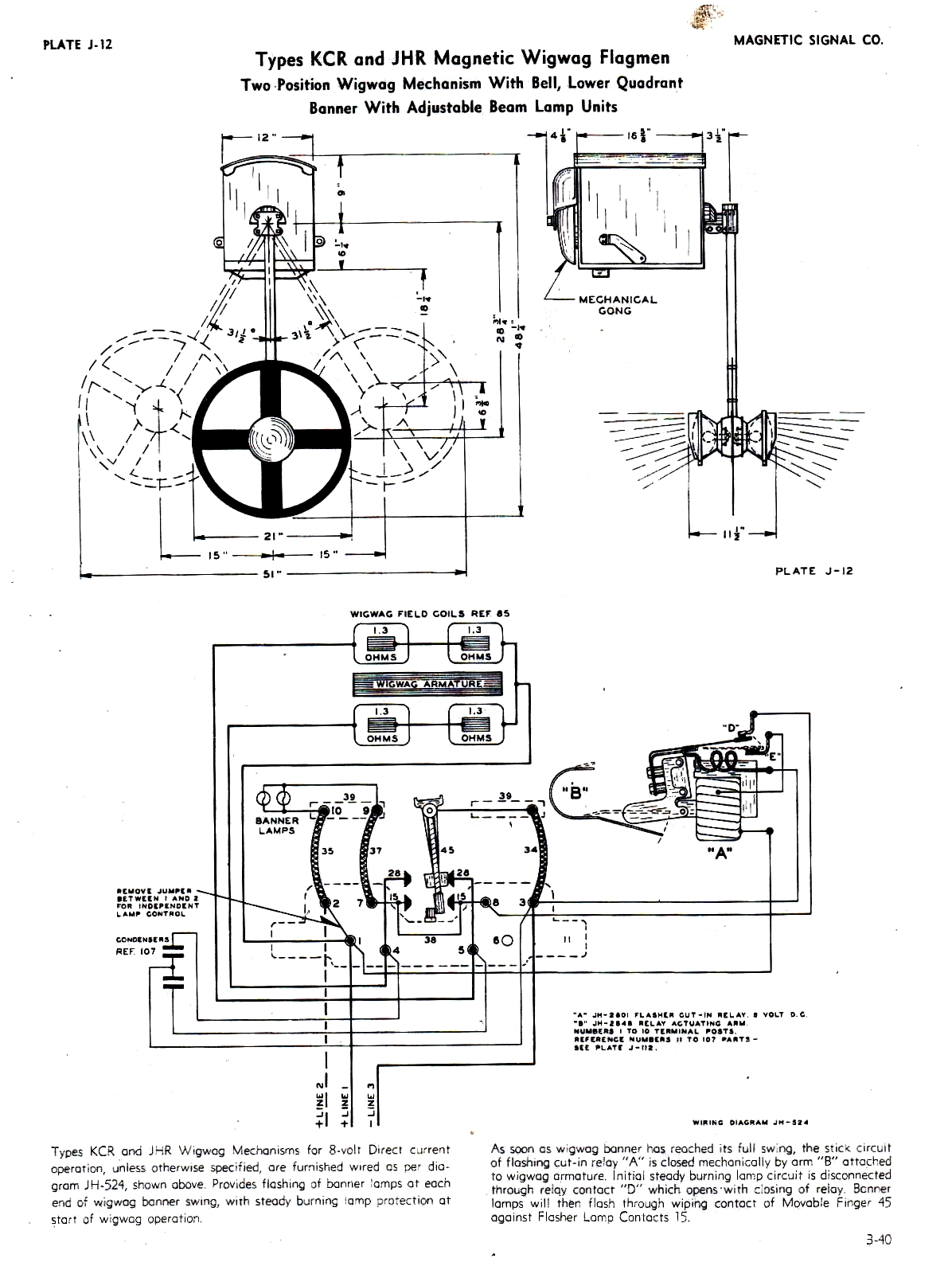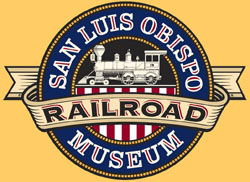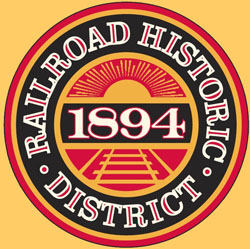WigWag Crossing Signal
Return to QR Index
OVERVIEW
The "Magnetic Flagman" or Wig Wag Signal, as it is commonly known, was seen all over California and the western states. It was designed by Albert Hunt of the Pacific Electric Railway in 1909. The Magnetic Signal Company located in Los Angeles, California, manufactured Wig Wag Crossing Signals from 1914 to 1949 and built over 7000 wig wag signals. The museum's front entrance wig wag is a lower quadrant "Southern Pacific" style model #3 and was mainly used by the SP Railroad and the PE Railway to protect railroad grade crossings. This particular wig wag signal was found in a backyard in Atascadero and was donated to the museum. It possibly was used locally to protect the Curbaril Street grade crossing in Atascadero on the Southern Pacific Coast Division.
DETAILS
Magnetic Flagman Wig Wag Crossing Signal
Manufacturer - Magnetic Signal Company
Style - Lower Quadrant Model #3
Voltage - 8 VDC
Railroad - Southern Pacific
WIG WAG SIGNAL HISTORY
Wigwag is a nickname for a type of railroad grade crossing signal once common in North America, referring to its pendulum-like motion that signaled the approach of a train. The device is generally credited to Albert Hunt, a mechanical engineer at Southern California's Pacific Electric (PE) interurban streetcar railroad, who invented it in 1909 for safer railroad grade crossings.
The earliest wigwags used by Pacific Electric, built in the PE shops, were gear-driven, but proved difficult to maintain. Changes were made and the final design, first installed in 1914 at a busy crossing near Long Beach, California, utilized alternating electromagnets pulling on an iron armature. A red steel target disc, slightly less than two feet in diameter was attached, which served as a pendulum. There was a red light in the center of the target, and with each swing of the target a mechanical gong sounded.
The new model, combining sight, motion and sound, was dubbed the magnetic flagman, and was manufactured by the Magnetic Signal Company of Los Angeles, California from 1914 to 1949. After the distinctive signals were installed, train and car collisions decreased at PE grade crossings. The signs became so common throughout the area that they were near-icons of Southern California motoring.
Three mechanically-identical versions were produced. The upper-quadrant model was mounted directly atop a steel pole and waved the target above the motor box. It was intended for use where space was limited. Since the target could not serve as the pendulum, a cast iron counterweight opposite the target was used. The lower-quadrant version waved the target below the motor box and was intended to be cantilevered from a pole, over road traffic.
Though Magnetic Signal manufactured a steel pole and cast-iron base for the purpose (which served as a cabinet for backup batteries and relays), PE often mounted the cantilevers on the wooden poles that also supported the overhead catenary providing power for streetcars. That rendered batteries unnecessary, since any failure of PE's generators resulted in a shutdown of the railway. It also permitted the relays to be housed in a separate, inexpensive cabinet, reducing the cost of the installation.
The third and least common version was a pole-mounted lower-quadrant signal, with the motor box fixed to the top of an octagonal steel frame that surrounded the target, presumably to protect both banner and motor box from being damaged by road vehicles. Dubbed the "peach basket" because of the protective framework, the apparatus was crowned by another visual warning, the traditional X-shaped "RAILROAD CROSSING" sign, or crossbucks. The majority of peach baskets were used by the Union Pacific Railroad. One version of the signal had the lower stripe on the banner replaced with the word stop that was lighted. When the signal was at rest, the words were hidden behind a screen that was painted to look like the missing stripe. They were either mounted on an island in the center of the road or on the side of the road.
The Magnetic Flagman wigwag create the motion by using large electromagnets pulling against an iron armature. Sliding contacts switch the current from one magnet to the other. The electromagnets were designed to work on one of three different voltages depending on the signal system design. The majority and the most common operated on 8 volts DC (VDC). One of the alternate options used 600 VDC from the streetcar and electric locomotive overhead catenary. Most of the 600 VDC units were used by the Pacific Electric Interurban Railway. There were also some 110 volt AC models of Magnetic Flagman used on several railroads, including Norfolk and Western, Winston-Salem Southbound, and the Milwaukee Road. Since AC power did not generate good torque, a coil cutoff device was installed that utilized all four magnets until full motion of the banner was obtained, then two of the magnets went off line and movement was maintained by the remaining two magnets.
Various options were available. One was a round, counterbalancing "sail" for use in windy areas and which was sometimes painted in the same scheme as the main target. A warning light with adjustable housing was offered, as was an "OUT OF ORDER" warning sign that dropped into view if power to the signal was interrupted. There was a rare adjustable turret-style mount for properly aiming the signal if space did not allow the cantilever to fully extend over the roadway. The last known example of the turret-mounted wigwag was removed from service in Gardena, California in 2000, while the versions with the warning signs were mostly shipped to Australia. One surviving example is on display at the Newport Railway Museum in Melbourne, Victoria, and one has been restored and now operates on the Puffing Billy Railway. An example or two of each signal still survive with collectors.
In the 1940's, the Interstate Commerce Commission mandated the installation of the alternating red lights with crossbucks at all new crossing installations. That, along with other rules about grade crossing signaling that the wigwags were unable to meet due to their power requirements, rendered them obsolete for new installations after 1949, but grandfathering laws allowed them to remain until the crossings they protected were upgraded. The Magnetic Signal Company was sold to the Griswold Signal Company of Minneapolis shortly after WWII. Production of new signals continued until 1949, and replacement parts until 1960.
MORE INFORMATION

Magnetic Wig Wag Crossing Flagman Accessories and Supplies (PDF)
https://en.wikipedia.org/wiki/Wigwag_(railroad)
http://www.trainweb.org/dansrailpix/WIG_WAG_PAGE2.htm
Return to QR Index

